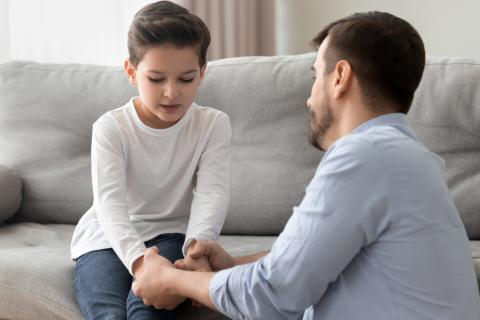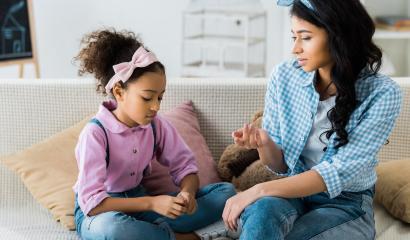Bright Futures
Articles and Updates from Phoenix Children's
As parents, or for any one in a caregiving role, it can be difficult to explain sad or scary things children may see on the news or hear about at school. Dr. Carla Allan, division chief of pediatric psychology at Phoenix Children’s, offers the following advice on talking to kids about tragedies.
Step 1: Self-regulation
“The first thing I always say to parents is make sure that we as parents are regulated when we have conversations with our kids,” Dr. Allan suggests. “When news first breaks, it might not be the right time.”
Even if it takes a day to calm yourself, it’s worth it. Kids will follow our example.
Step 2: Let your child lead the conversation
It’s easy to worry that talking to children about tragedies in the news might be the wrong thing to do, or that it may escalate their feelings. Let your child lead the conversation, says Dr. Allan. It will let you take stock of their natural understanding and give you the information you need to be helpful.
Here are some potential conversation starters for caregivers:
- There has been a lot in the news lately, and there are some kids who are having a hard time. How are you doing?
- Is there anything you want to talk to me about?
- I care about you and I want to check in.
- How are you doing with feeling safe, sad or worried? Is there anything you think I should know?
Step 3: Remind children they are safe
Kids feel good when they have safety and security.
“When kids feel safe, when things are predictable, they are empowered to help themselves,” Dr. Allan says.
She suggests reminding children the things they already know about how to stay safe in their school – trainings and drills, that the doors are always locked, their proximity to fire and police stations, etc. -- and what to do when something seems off, like telling an adult.
Step 4: Possibility vs. probability
Dr. Allan stresses it’s important to teach kids the difference between possibility and probability. If they see news reports of a shooting, that doesn’t mean they are likely to experience one at their own school.
Step 5: Limit exposure to the news
When young children see things on the news, they do not always know it is repeated coverage of the same event; they may think it’s something that keeps happening again and again. Limit news exposure and how much you talk about it at the dinner table.
Parents can be good role models for children in taking breaks from screen time. During these breaks, Dr. Allan suggests spending time outside, moving your body and taking care of yourself.
Step 6: Remind children to tell an adult if they see something troubling
Children are taught not to tattle on each other, but remind your child that safety comes first.
“Teach children, if they are ever worried about one of their friends doing something dangerous, it’s OK to tell someone they trust like a teacher or another grown-up,” Dr. Allan says. “That’s not tattling or being nosy; it’s a good thing to do.
Step 7: Call in extra help when needed
“When their feelings are getting in the way of their everyday life, such as social or academic functioning, it’s time to get help,” Dr. Allan says. She recommends starting with your pediatrician.

